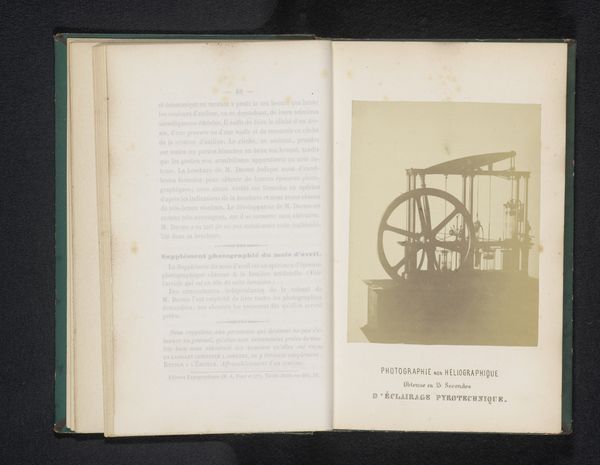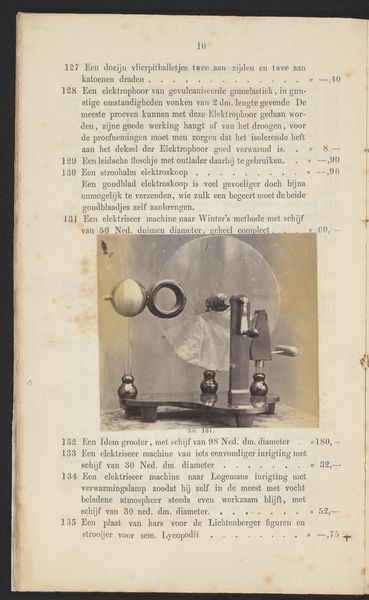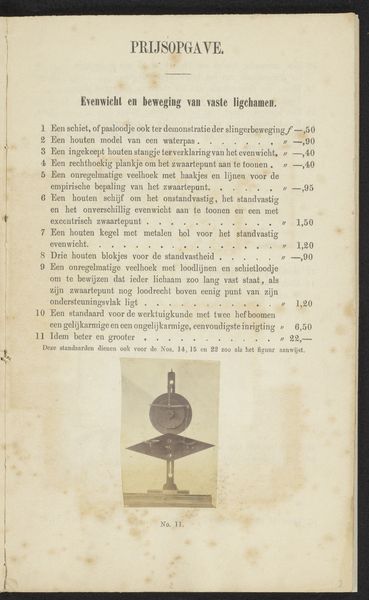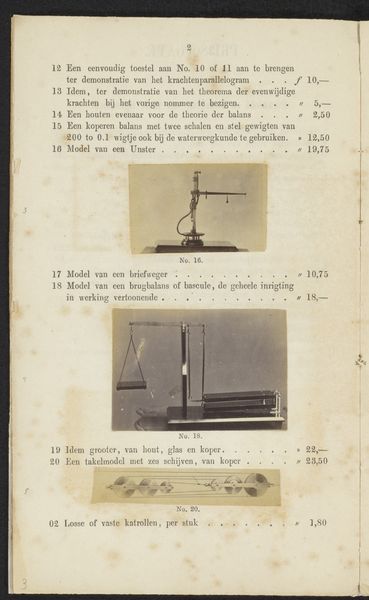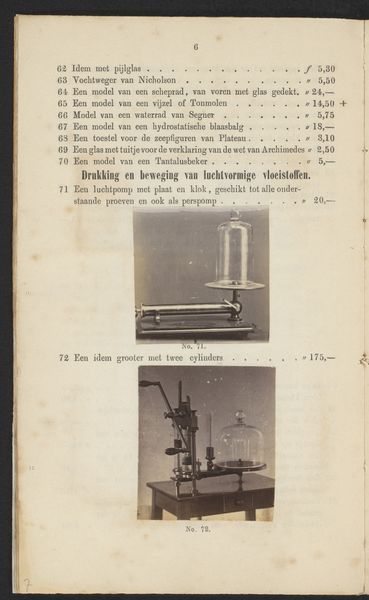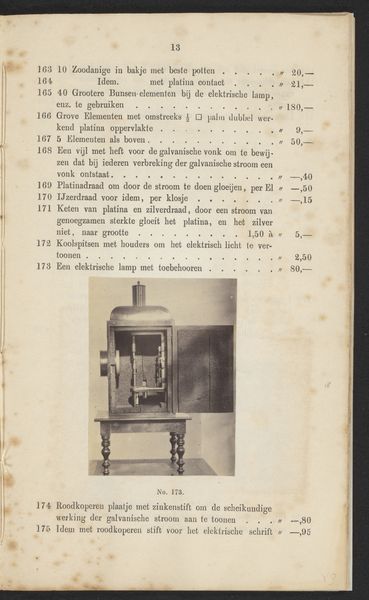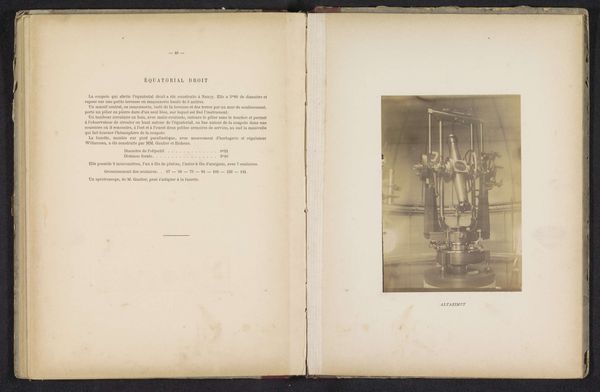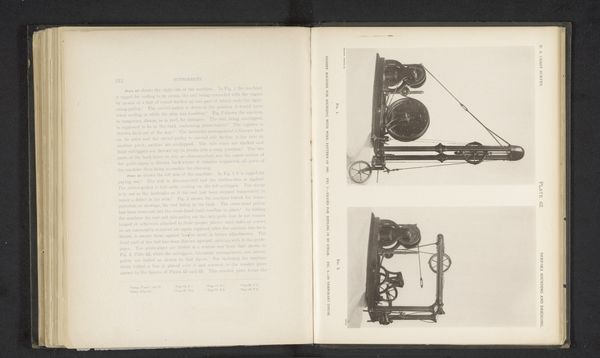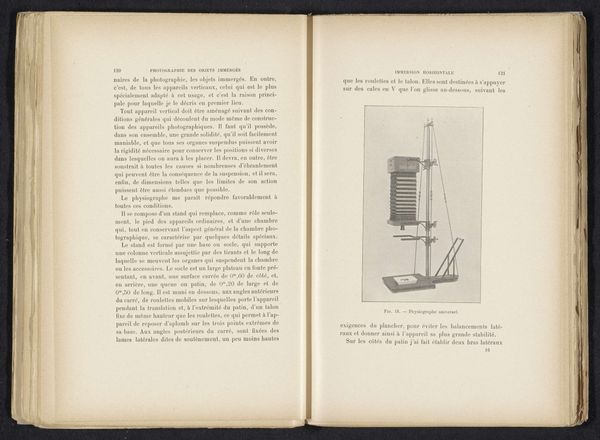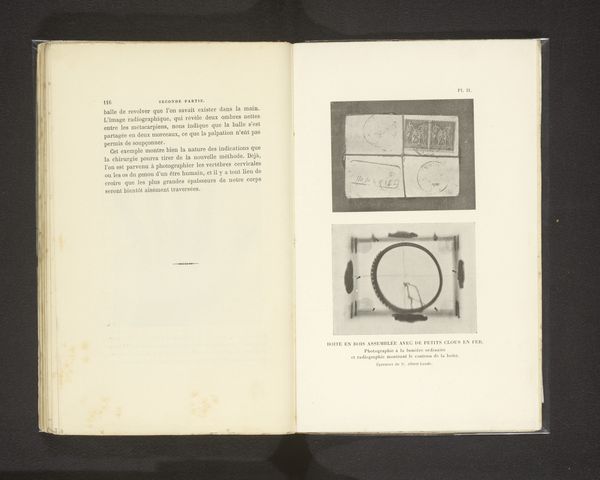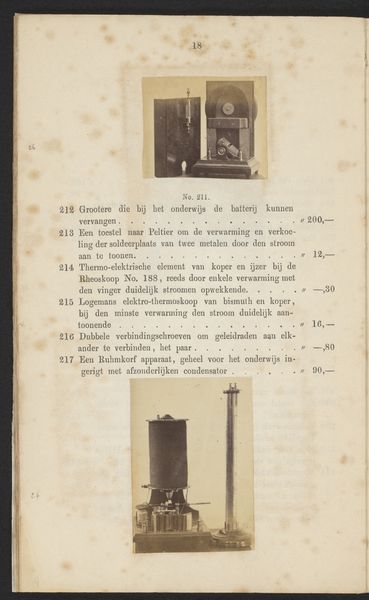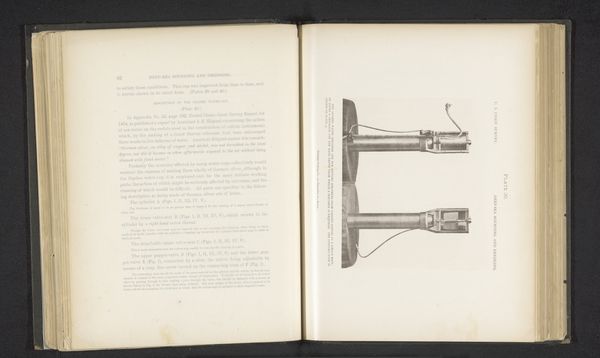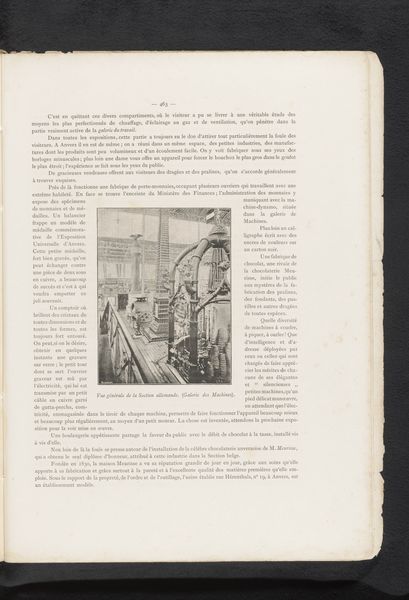
Toestel op een elektromagneet voor de mechanische werking van inductiestromen before 1867
0:00
0:00
print, photography
# print
#
text
#
photography
#
watercolor
#
historical font
Dimensions: height 59 mm, width 52 mm
Copyright: Rijks Museum: Open Domain
Editor: Here we have an image, most likely a photograph, of a page from what appears to be a catalog, dating back to before 1867 by F.W. Funckler. It features a contraption described as "Toestel op een electromagneet voor de mechanische werking van inductiestroomen," which I think translates to "Device on an electromagnet for the mechanical operation of induction currents." It looks very old-fashioned and the whole presentation seems incredibly specific. What strikes you about this, our resident expert? Curator: What fascinates me here is the context of production. Before 1867, photography itself was still a relatively new and complex industrial process. The creation of this image—likely a collotype or similar early photographic print—represents a significant investment of labor, materials, and specialized knowledge. Think about it: Someone had to manufacture the electromagnet, then arrange it for optimal viewing, illuminate the scene, and carefully expose and develop the plate. The resulting photograph then needed to be reproduced for inclusion in this catalogue. Editor: So you're saying the photograph itself tells a story beyond the object it depicts? Curator: Exactly. It speaks volumes about the burgeoning scientific culture of the mid-19th century, and the increasingly sophisticated means of production and distribution employed to showcase these advancements. Even the presence of the historical font used to describe this and other products tells you all the progress of design applied to new materials. Who was the audience for this catalog, and what social forces drove their desire for such specialized electromagnetic devices? Consider the economic impact of scientific advancement; how did innovations translate into material goods, and who benefited from their production and consumption? Editor: I never considered the actual *making* of the image as part of the art itself! I'm now wondering who assembled these catalogs and distributed them; so many people contributed! Curator: Precisely! We gain a better sense of not only of the social circumstances behind this invention, but how photography, and cataloging itself, was enabling material circulation during the second Industrial Revolution.
Comments
No comments
Be the first to comment and join the conversation on the ultimate creative platform.
